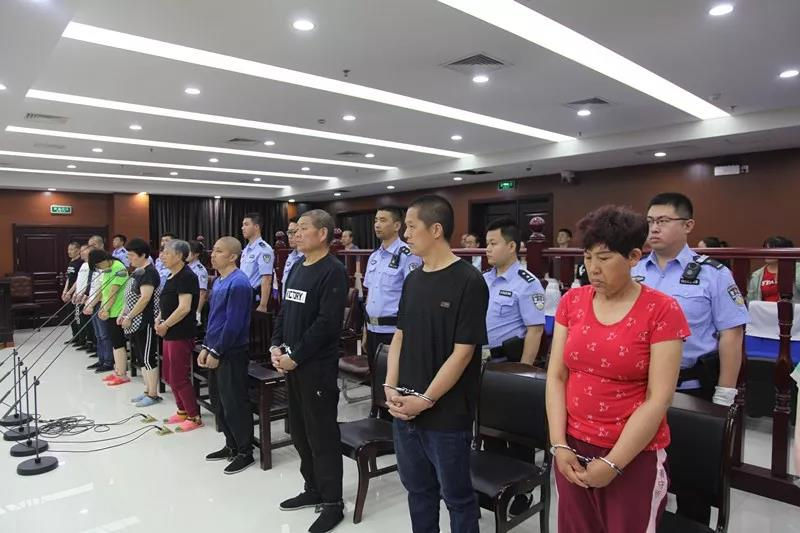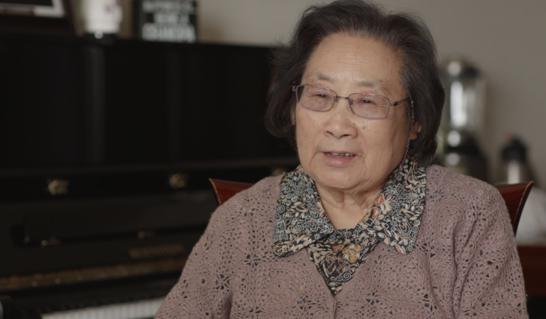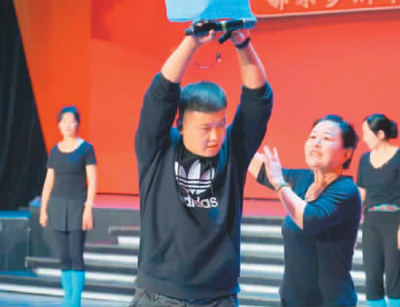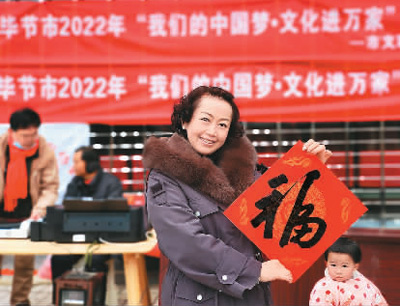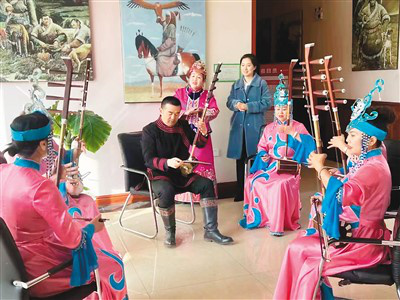[See you at 8 o’clock] Exposure! The rectification plan of environmental protection inspectors in Taiyuan, Shanxi and other places is copied.
CCTV News:At 8 o’clock every day, CCTV will sort out the big and small things that happened around us within 24 hours.
[Follow] Exposure! The rectification plan of environmental protection inspectors in Taiyuan, Shanxi and other places is copied.

The Second Inspector Group of Ecological Environmental Protection of the Central Committee inspected the waste residue storage on the banks of Xiaohe River in Taiyuan City.
On the 6th, the Second Ecological Environmental Protection Inspector Group of the Central Committee revealed that many places in Shanxi Province paid insufficient attention to the rectification work of the Central Environmental Protection Inspector, and the rectification plan was copied, and the formalism problem was outstanding.
Inspector’s rectification plan is a local document to promote the implementation of the first round of rectification of problems found by central environmental protection inspectors, and it is the basis and premise for solidly carrying out inspector rectification. However, in November 2018, the inspector group conducted a "look back" on Shanxi Province and found that some places did not implement the feedback from the central environmental protection inspector and the requirements of Shanxi Province’s rectification plan. Changzhi, Datong, Linfen, Taiyuan, Jinzhong and other cities copied the rectification plan seriously, and the formalism problem was prominent, which affected the implementation of the rectification work.
The inspector group pointed out that Shanxi Province failed to guide, supervise and inspect the rectification work of local inspectors; Taiyuan and other cities have not paid enough attention to the inspector’s rectification, perfunctory response, copying the rectification plan, and the problem of formalism is prominent, even just "shouting slogans" and "brushing slogans", without paying attention to implementation and landing, and dereliction of duty is obvious.
[domestic]
The Ministry of Foreign Affairs responded to the "next round of Sino-US economic and trade consultations": the Chinese team is preparing to go to the United States for consultations.

On the 6th, Foreign Ministry Spokesperson Geng Shuang responded at a regular press conference that the US threatened to impose tariffs on China’s products. Similar situations have occurred many times before. I hope that the US and China will make joint efforts and move in the opposite direction. In addition, the Chinese team is preparing to go to the United States for consultations.
The Ministry of Human Resources and Social Security has rectified the work style: put an end to "squatting, squatting and squatting" counters.
According to the website of the Ministry of Human Resources and Social Security, in recent days, the Ministry of Human Resources and Social Security has made special arrangements, focusing on streamlining certification materials, reducing queuing time, compressing the time limit for completion, strict work discipline, optimizing service facilities, and unblocking the service hotline. In six aspects, special promotion actions were carried out. The Ministry of Human Resources and Social Security requires that facilities be facilitated, service window design standards should be implemented, and "squatting, squatting and squatting" counters should be eliminated, and insulating glass should not be set in new construction or renovation; Eating snacks, speculating in stocks, playing games, chatting on posts, online shopping, fitness and entertainment are prohibited during work.
The three departments started the export of used cars, and the first batch of 10 provinces and cities such as Beijing opened.
According to the website of the Ministry of Commerce, on the morning of May 5, the Ministry of Commerce, the Ministry of Public Security and the General Administration of Customs jointly held a special conference on the export of used cars, officially launching the export of used cars. At present, the first batch of used car export areas are 10 provinces and cities including Beijing, Tianjin, Shanghai, Zhejiang (Taizhou), Shandong (Jining), Guangdong, Sichuan (Chengdu), Shaanxi (Xi ‘an), Qingdao and Xiamen.
NDRC’s response: Relaxing settlement does not mean relaxing real estate regulation.
Chen Yajun, director of the Development Strategy and Planning Department of the National Development and Reform Commission, said on the 6th that there must be no selective settlement. Relaxing the settlement does not mean relaxing the regulation of real estate, nor does it mean giving up the policy on the population due to the city.
The Opinions of the Central Committee of the Communist Party of China and the State Council on Establishing and Perfecting the System, Mechanism and Policy System of Urban-Rural Integration Development released on the 5th proposed to deepen the reform of household registration system effectively and orderly, and to relax the restrictions on urban settlement except for a few megacities.
The data shows that by the end of 2018, there were still 226 million agricultural migrants who had become permanent residents in cities and towns but had not settled in cities, of which 65% were located in cities above the prefecture level, basically big cities.
The central bank lowered the deposit reserve ratio of small and medium-sized banks and released long-term funds of 280 billion yuan.
Yesterday morning, the central bank announced that it decided to implement a lower preferential deposit reserve ratio for small and medium-sized banks focusing on local areas and serving counties from May 15, 2019. About 1,000 county-level rural commercial banks can enjoy this preferential policy, releasing long-term funds of about 280 billion yuan, all of which are used to issue loans to private and small and micro enterprises.
More than a thousand people put out a sudden mountain fire in Chengde, Hebei Province, which was caused by setting off firecrackers.

At 10 o’clock on May 6, a forest fire broke out in Pingquan County, Chengde City, Hebei Province. As of 16: 45, the northwest line has been controlled, the fire is moderate, and it develops in the southeast direction. It is a downhill fire, which is generally controllable. The wind force at the fire site is northwest wind 3-4. At present, local fire rescue teams, local fire fighting teams, cadres and the masses have organized more than 1,000 people to participate in the fire fighting, and more than 500 people are on the way to reinforce. Fire fighters have deployed fire engines to stop forest fires from entering the village. Local police officers are transferring people and property, and there are no casualties. The cause of the fire was initially identified as firecrackers, and the perpetrators have been controlled by the local public security organs.
Report of 10 deaths and 12 injuries caused by Jinan Pharmaceutical Factory: Construction workers ignited flammable solids.
According to the website of the Emergency Management Department, the Emergency Management Department released the Notice on the "4 15" major fire poisoning accident of Shandong Jinan Qilu Tianhe Huishi Pharmaceutical Co., Ltd. on the 6th. The Circular pointed out that the direct cause of the accident was that during the process of cutting the pipeline of the coolant water system with hot work in a confined space, toxic smoke such as nitrogen oxides was generated when the coolant corrosion inhibitor piled nearby was ignited, which led to the poisoning death and injury of the on-site personnel.
At about 15: 37 on April 15, 2019, Qilu Tianhe Huishi Pharmaceutical Co., Ltd., located in Licheng District, Jinan City, Shandong Province, had a major accident during the renovation of the refrigerant water (ethylene glycol solution) system pipeline in the basement of the freeze-dried powder injection production workshop, resulting in 10 deaths and 12 minor injuries.
Zhang Nongke, General Manager of Beijing Environmental Sanitation Group, was dismissed.

According to the news from the Supervision Committee of the Beijing Municipal Commission for Discipline Inspection, Zhang Nongke, deputy secretary of the Party Committee and general manager of Beijing Environmental Sanitation Engineering Group Co., Ltd., is suspected of serious violation of the law and is currently undergoing disciplinary review and supervision investigation.
[international]
Russian Airlines forced to land on fire. The black box of the passenger plane has found the cause of the accident and is under investigation.

According to Sputnik’s report on the 6th, the black box of the Russian Su Huoyi Superjet 100 (SSJ-100) has been found, and the cause of the accident is under investigation.
On the afternoon of May 5, local time, a Russian Su Huoyi Superjet 100 burst into flames when it made an emergency landing at Moscow Sheremetyevo International Airport, killing 41 people, including 40 passengers including 2 children and a crew member.
A small plane crashed in northern Mexico, killing 14 people.
According to Mexican media reports on the 6th, the wreckage of the plane that disappeared in the northern Mexican state of Abela on the 5th has been found, killing 14 people on board. According to reports, all the people on board were Mexicans, including 11 passengers and 3 crew members. Passengers went to Las Vegas to watch a boxing match, but something happened on their way back to Mexico. At present, the specific cause of the accident is still under investigation. It is reported that the local weather conditions were not good at the time of the incident.
Trump: 100% support for Israel.

Trump Twitter screenshot
"The United States supports Israel 100% to protect its citizens." Recently, the Israeli military and Palestinian militants in the Gaza have been under constant fire, and US President Trump used such remarks on Twitter on the 6th to express his support for Israel.
According to "Russia Today" (RT) reported on the 6th, on the same day, Trump released two tweets in succession on the Palestinian-Israeli conflict in recent days, expressing support for Israel.
Regarding Trump’s statement, RT said that Trump directly ignored the Israeli use of force against the people of Gaza and the increasing number of casualties there.
According to Xinhua News Agency, the Palestinian-Israeli conflict escalated on the 5th local time. According to Israeli military and Gaza officials, militants fired about 650 rockets into southern Israel, killing at least four civilians and injuring more than 70 others. Israeli air strikes on several militant strongholds in Gaza killed 19 Palestinians and injured more than 150.
On the 6th, RT reported that after two days of fierce confrontation, Hamas, a Palestinian armed group from the Gaza, and Israel reached a ceasefire agreement. There were casualties on both sides.
Boeing 737 MAX suffered a global grounding. Follow-up: Boeing admitted that there was something wrong with concealing its alarm.

Boeing Company said on the 5th that Boeing engineers discovered that the alarm system in the cockpit of Boeing 737 MAX had failed due to software problems as early as 2017, but it was not until the disaster of Egypt Airlines that Boeing executives learned of this situation.
An earthquake of magnitude 7.1 occurred in Morobe province of Papua New Guinea.

At 5: 19 Beijing time on May 7th (7: 19 local time on May 7th), an earthquake of magnitude 7.1 occurred in Morobe province, Papua New Guinea, with a focal depth of 130 kilometers. The epicenter was located at 6.96 degrees south latitude and 146.49 degrees east longitude.
Princess Megan successfully gave birth to a baby boy, Prince Harry announced good news.

Britain’s Prince Harry announced on the 6th that Megan had successfully given birth to her first child, a 7-pound, 3-ounce baby boy. According to the news, Megan and the baby are currently in a healthy state.
Society
Parents listen to enema therapy to reduce fever and shock caused by renal failure in 6-year-old girls.

A 6-year-old girl caught a cold and had a fever. Her mother listened to the enema therapy in a small clinic. But after 4 days of enema, the child suddenly became "unable to urinate" and was sent to Wuhan Children’s Hospital with shock symptoms. Fortunately, the girl got better in time and recovered and was discharged recently.
According to reports, the Department of Nephrology of Wuhan Children’s Hospital has treated such children many times. In the past, they were healthy, but suddenly had renal failure. When asked about the history of treatment, they all had the experience of enema, which is probably an important factor inducing renal failure. Wang Xiaowen, deputy director of the Department of Nephrology, Wuhan Children’s Hospital, reminded that the ingredients of enema are complex. If it is used excessively or wrongly, it will easily damage the delicate organs such as liver and kidney of children.
Changshu No.1 Hospital responded to "infusion of expired glucose to patients": it will be held accountable.
In response to complaints from patients’ families, the First People’s Hospital of Changshu City, Jiangsu Province injected the patient with Lega (sodium, potassium, magnesium, calcium and glucose injection) which was overdue for 5 months. Recently, Ye Hongwei, the vice president of the hospital involved, responded and found through investigation that the patient’s injected Lega injection was indeed overdue. After investigating the root cause, the hospital will hold the relevant personnel accountable.
"This is indeed an omission in our work, and once again express sincere apologies to patients and their families." Chen Bo, the legal representative of Changshu First People’s Hospital, said that the matter would be dealt with seriously.
The earliest discovery of 31 Qing Dynasty documents in wei county, Hebei Province was in the twenty-sixth year of Qianlong.
Recently, the staff of the cultural relics protection department in wei county, Hebei Province, found 31 Qing Dynasty documents in a villager’s home in Pangu Village of this county, and the earliest time for inscription was in the 26th year of Qianlong (AD 1761). Experts said that the discovery of these instruments is of great significance to the study of land system.
Heavy trust! Female traffic police holding a baby to direct traffic.

At the fork of the Cultural Palace in Yuzhong District, Chongqing, a video of a female traffic policeman directing traffic while holding a baby has attracted much attention on the Internet. It turned out that Mr. Lu, who had an emergency stop, came to Chongqing to see a doctor with a 15-day-old baby, and his wife, who was confinement, was not at ease and followed him. On the way, my wife suddenly bled out. Mr. Lu saw Xiao Wei, a policeman of the traffic patrol detachment of Yuzhong District Branch of Chongqing Public Security Bureau, and quickly went up for help. Xiao Wei held the child and directed the traffic while holding the child. Twenty minutes later, Mr. Lu settled his wife in the hospital and hurried to pick up the children. He was very flustered. Xiao Wei and another policeman, Chen Yingyang, accompanied him to the hospital and helped Mr. Lu to complete all the admission procedures for the children in the hospital before leaving.
[Sports]
Zhu Ting won the finals MVP to help Wakif Bank win the championship 3-0.

In 2018-2019, the fifth round of the final of the Turkish Women’s Volleyball Super League began to compete. Wakif Bank, where China’s women’s volleyball player Zhu Ting is located, played well, and Duodianhua beat her old rival Isachibashi 3-0, winning the five major post-war defending titles successfully, which is also the 11th crown they won in the Turkish Super League. Zhu Ting scored 14 points in the first round, winning the MVP award of Tuchao again, and Zhu Ting drew a successful conclusion for the third season of studying abroad.
[face]
[Kong Tao] was awarded the title of Nigerian Chief at the age of 34.

After graduating from Beijing Jiaotong University in 2010, 34-year-old Kong Tao applied to China Civil Engineering Group and was sent to work in Nigeria. Kong Tao learned the local language, played a major role in the project construction, and also trained and managed local employees to help build local schools and football fields. In order to thank Kong Tao for his contribution, the Tuhuang in the Jiwa area of Abuja, the capital of Nigeria, awarded the title of "WAKILIN AYYUKA" to Kong Tao, and personally awarded him the certificate and scepter symbolizing the power of the chieftain, hoping that he would continue to serve as a bridge between the Chinese and Nepalese people.
[Zhou Yasong] 55-year-old mother and daughter study in the same school.

Zhou Yasong is 55 years old this year. She and her 28-year-old daughter, You Wu, are full-time graduate students in the Conservatory of Music of Central China Normal University. Zhou Yasong said in an interview that if any doctoral supervisor of the Conservatory of Music is willing to take me after graduation, I am still willing to try my exams and continue my studies.
[Wei Shaolan] 99-year-old "comfort women" survivors died

On May 5, Wei Shaolan, a survivor of the Japanese "comfort women" system during World War II, died of illness at the age of 99. Wei Shaolan was born in 1920 in Lipu County, Guangxi. In the winter of 1944, 24-year-old Wei Shaolan was captured by the Japanese army and was devastated in the comfort station in Maling Town.
See you at 8 o’clock tomorrow!
Editor: Zhu Xinyu Dai Mengmeng

